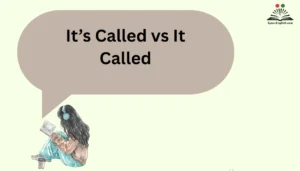Punctuation is a powerful tool in writing, helping to clarify meaning and give flow to sentences. Among all punctuation marks, the semicolon often confuses writers. Whether you’re crafting an academic paper, writing an email, or posting on social media, using the right punctuation makes all the difference in how your message comes across.
Confused by semicolon vs. semi-colon? Discover the real difference, correct usage, and which one’s right in modern writing! This article will dive deep into the semicolon’s correct spelling, its uses, when to avoid it, and the history behind it. By the end, you’ll be confident in using semicolons effectively and avoiding common mistakes.
What Is a Semicolon? Definition, Function, and Examples
At its core, a semicolon is a punctuation mark (;) that serves to separate closely related ideas. It’s stronger than a comma but not as final as a period. You can think of it as a punctuation mark that joins two sentences that are related but could stand alone if needed.
How the Semicolon Works
The semicolon typically has three main uses:
- Joining independent clauses (two complete sentences) without a conjunction.
- Separating items in complex lists where commas are already used.
- Linking independent clauses with transitional phrases (e.g., however, therefore).
Examples of a Semicolon in Action
- Joining Independent Clauses: “I enjoy reading books; my sister prefers watching movies.”
- Separating Complex List Items: “We visited Paris, France; London, England; and Rome, Italy.”
- Linking Clauses with Transitional Phrases: “She didn’t study for the exam; as a result, she failed.”
“Semicolon” or “Semi-Colon”: Which Spelling Is Correct in 2025?
The confusion between “semicolon” and “semi-colon” has been around for centuries. However, the correct spelling in modern usage is semicolon—no hyphen.
The Correct Spelling: Semicolon
The term “semicolon” is the preferred spelling in both British and American English. Over time, linguists and grammarians have agreed that the hyphenated form “semi-colon” is outdated.
What About “Semi-Colon”?
While “semi-colon” was used in earlier English texts, it’s no longer the correct spelling in most major style guides (APA, MLA, Chicago). If you’re writing for an academic journal or professional website, it’s important to use semicolon without the hyphen.
Why “Semi-Colon” is Now Considered Obsolete
The term “semi-colon” dates back to the 16th century when early English grammarians tried to describe the punctuation mark in more detail. It combines the prefix “semi-” (meaning half) and “colon” (a punctuation mark that separates items).
However, as language evolved and grammar rules became standardized, the hyphenated form fell out of favor. In modern English, “semicolon” is the preferred and grammatically correct term.
Timeline of Usage Decline
- 16th Century: “Semi-colon” was widely used.
- 18th Century: Grammar guides started favoring “semicolon” without the hyphen.
- 20th Century: “Semicolon” became the dominant spelling, and “semi-colon” was phased out.
Semicolon Rules: When to Use a Semicolon in Writing
Using semicolons correctly elevates your writing. Here are the key rules for using semicolons effectively:
Connecting Independent Clauses Without a Conjunction
When you have two closely related independent clauses (complete sentences), you can use a semicolon to join them, eliminating the need for a conjunction like “and” or “but.”
Example:
- “I wanted to go for a walk; it was raining too much.”
The semicolon works here because the two clauses are closely related in meaning.
Separating Items in Complex Lists
When a list contains items with internal commas, semicolons help clarify the division between items.
Example:
- “The conference will feature speakers from New York, USA; London, England; Tokyo, Japan; and Paris, France.”
Without semicolons, this list would be hard to read and understand.
Joining Independent Clauses with Transitional Phrases
Transitional phrases like however, therefore, and for example can connect two independent clauses, and a semicolon is the appropriate punctuation mark.
Example:
- “She was tired; however, she continued to work late into the night.”
The semicolon signals a strong connection between the two clauses while allowing for a transitional phrase in between.
Avoiding Run-On Sentences and Comma Splices
A semicolon can help avoid comma splices (when two independent clauses are incorrectly joined by just a comma) or run-on sentences (when independent clauses are improperly linked).
Example:
- Incorrect: “I forgot my keys, I had to go back home.”
- Correct: “I forgot my keys; I had to go back home.”
When Not to Use a Semicolon: Common Errors to Avoid
Knowing when not to use a semicolon is just as important as understanding when to use it. Here are some common mistakes to watch out for:
Between a Dependent and an Independent Clause
A semicolon should not be used to join a dependent clause (one that can’t stand alone) with an independent clause.
Example of Incorrect Usage:
- “Although I was tired; I stayed up late.”
The correct punctuation would be a comma or simply starting a new sentence: “Although I was tired, I stayed up late.”
Before Coordinating Conjunctions (And, But, Or, Nor, So, Yet)
When you use a coordinating conjunction (like and, but, or so) to join two independent clauses, use a comma, not a semicolon.
Example of Incorrect Usage:
- “I love reading books; but I don’t have time.”
Correct:
- “I love reading books, but I don’t have time.”
Overuse of Semicolons
Using semicolons excessively can make your writing seem forced or awkward. Use them sparingly and only when necessary for clarity.
Semicolon vs. Colon vs. Comma: A Side-by-Side Comparison
Here’s a quick comparison to help you differentiate between semicolons, colons, and commas. All three serve different purposes, and knowing when to use each one is crucial for writing clarity.
| Punctuation Mark | Use | Example |
| Semicolon (;) | Joins related independent clauses, separates complex list items | “I wanted pizza; she wanted pasta.” |
| Colon (:) | Introduces lists, explanations, or quotes | “She has three hobbies: painting, reading, and hiking.” |
| Comma (,) | Separates items in a list, joins independent clauses with conjunctions | “I bought apples, oranges, and bananas.” |
Etymology of “Semicolon”: Where Did It Come From?
The word “semicolon” is a combination of two Greek roots. “Semi” means “half,” and “colon” refers to a punctuation mark that separates related ideas. The semicolon was first introduced in 1494 by Italian printer Aldus Manutius, who is often credited with creating the modern punctuation system.
Historical Development
- Ancient Greek: “Colon” referred to a part of a sentence or phrase.
- 15th Century: Manutius introduced the semicolon as a punctuation mark to distinguish between independent and dependent clauses.
- Modern Times: The semicolon is now a standard punctuation mark in English grammar.
Semicolon in Digital Writing: Emails, Social Media & Code
While the semicolon has traditionally been used in academic and professional writing, it’s also gaining traction in more informal digital writing. Here’s how it’s used across various digital platforms:
Emails and Professional Communication
Semicolons are great for professional writing, especially when you’re linking related thoughts or separating items in complex lists.
Example:
“I’ve attached the report; please review it and send feedback by Thursday.”
Social Media
On platforms like Twitter or Facebook, semicolons can help break up ideas in a way that makes posts more readable.
Example:
“Love a good book? Reading is my escape; it’s the best way to unwind.”
Programming
In programming languages like JavaScript or C++, semicolons are often used to terminate statements. A missing semicolon in code can lead to bugs or errors.
Real-World Examples of Semicolon Usage
To fully grasp the impact of semicolons, let’s look at some real-world examples.
In Literature
- “The day was cold; the wind was harsh, biting at my skin.” — Kurt Vonnegut
In Business Writing
- “The marketing team is responsible for social media; the sales team handles direct outreach; and the customer support team works on feedback.” — Company Report
Semicolon FAQs: Quick Answers to Common Questions
Is the semicolon dead?
No, the semicolon is still very much alive in writing, especially in academic and formal contexts. It’s simply less used in casual writing.
Can I start a sentence with a semicolon?
Yes, you can start a sentence with a semicolon, but it must connect to a preceding independent clause.
What’s the difference between a semicolon and an em dash?
A semicolon joins related clauses, while an em dash creates a stronger break or introduces a new idea.
Conclusion:
The semicolon is a versatile punctuation mark that enhances clarity and flow in your writing. Whether you’re drafting an email, writing an essay, or coding in JavaScript, understanding how and when to use it can make your communication stronger and more effective. Remember, it’s not just about rules—it’s about clarity and connection. So, the next time you’re unsure, consider whether a semicolon can improve the flow of your ideas.
For anyone serious about writing, mastering the semicolon is essential—no matter how casual or formal the context may be.

Emma Brooke is a passionate English educator, writer, and language enthusiast with over a decade of experience helping learners master the nuances of the English language. At SynoEnglish, she blends practical grammar advice with real-world communication tips to make English easier, clearer, and more enjoyable for readers of all levels.



